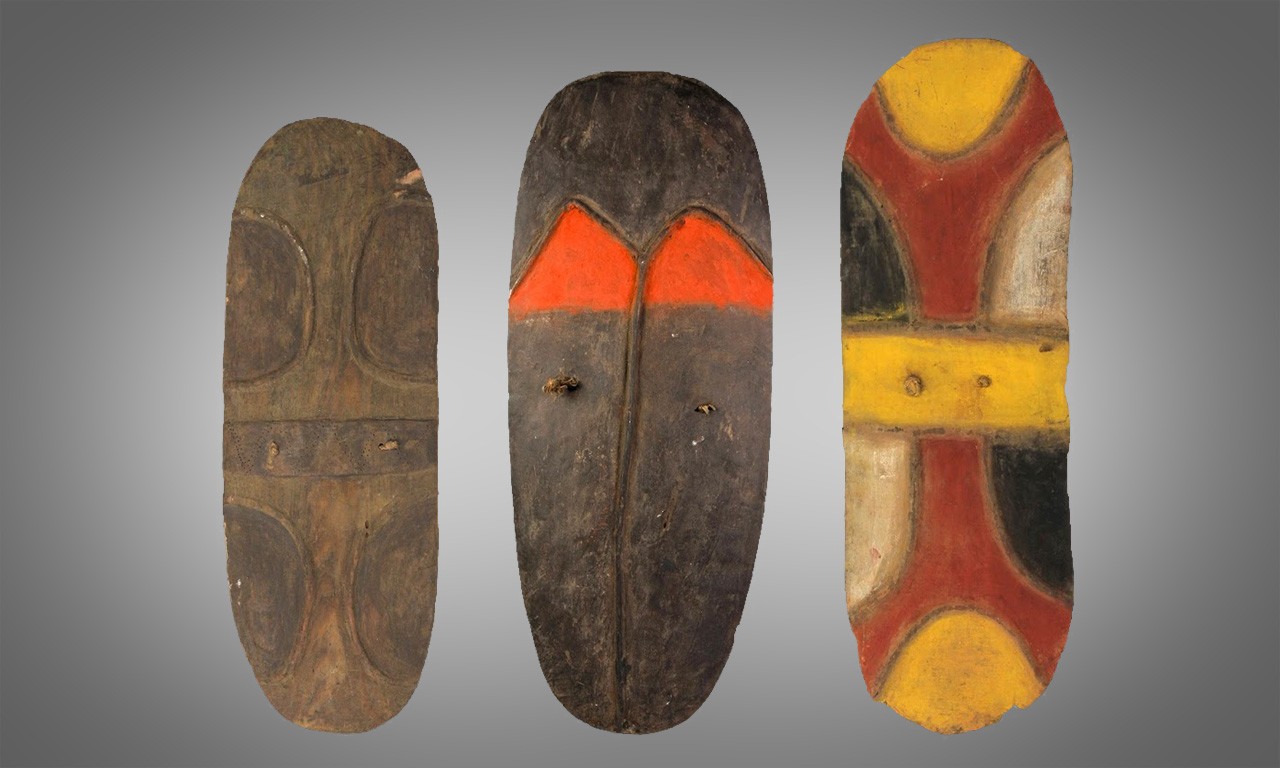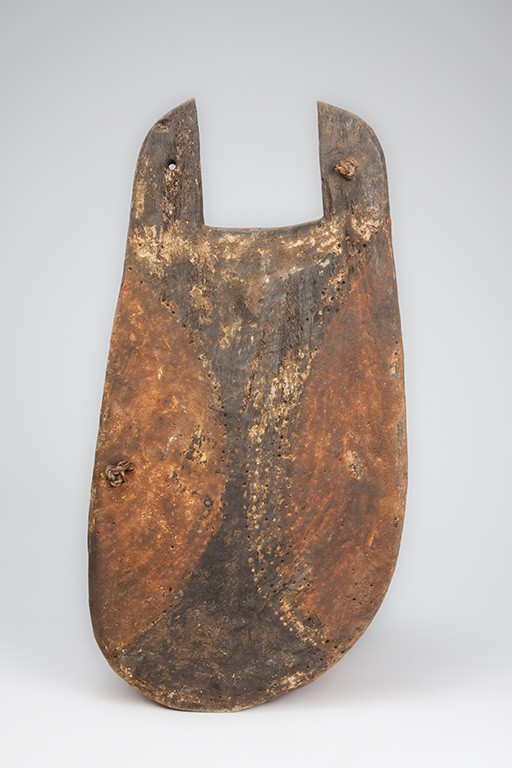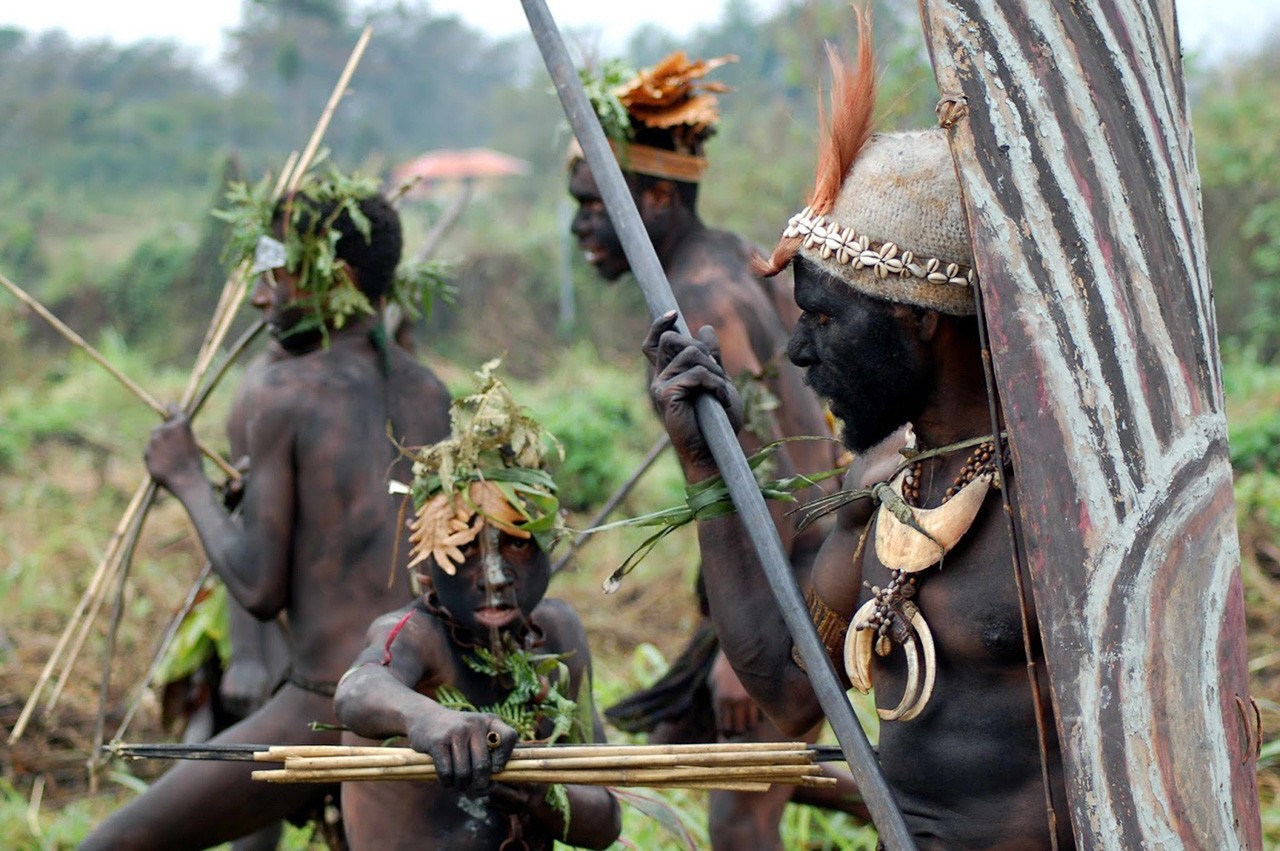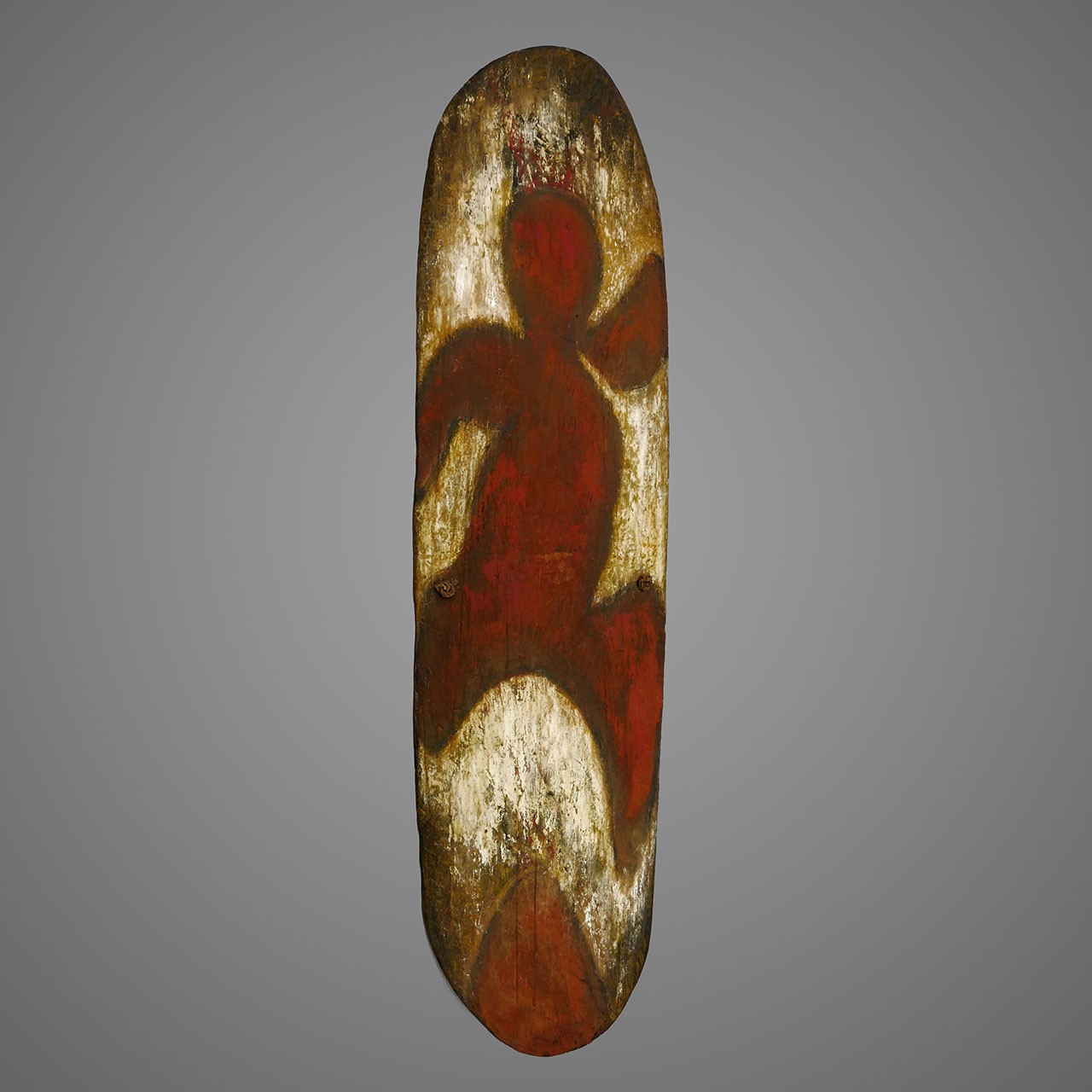 |
Shields (Wörrumbi), 20th Century
Mendi culture; Southern Highlands Province, Papua New Guinea, Melanesia
Wood, pigments and fiber; Various Dimensions
2017.10.163, 2003.43.3, 2017.10.143
Anonymous Gift |
On the Mendi
In an early 20th Century effort to pacify Papua New Guinea, Australian colonial administrators began a campaign of suppressing tribal warfare. The shields which had once served as effective bulwarks against arrows and spears did little against gunfire, so rather than face a massacre the groups of the New Guinea’s Highlands allowed their shields and spears to be collected and burned. Few shields survived this destruction, but the production of new shields never fully ceased. This post focuses on three shields from the Bowers Museum's collections that were made in Papua New Guinea’s Southern Highlands after warfare was outlawed, and looks at two other Mendi Valley shields from the Bowers' permanent collection.
 |
Shield (Elyáborr), 20th Century
Mendi culture; Southern Highlands Province, Papua New Guinea, Melanesia
Wood, pigments and fiber; 31 1/2 x 16 1/4 x 1 1/2 in.
2017.10.47
Anonymous Lender |
Sling it Over Your Shoulder like a Highland Solider
Historically the wars waged in the Highlands of New Guinea ranged from mock battles between neighboring groups to bitter feuds constantly at risk of erupting into bloodshed. The relative intensity of each of these conflicts necessitated varying types of weaponry, and so even within the narrow confines of New Guinea’s Mendi Valley three different shields were used. The first of these was the shomo, an immensely large shield made of palm bark woven to a wooden board. Its unwieldy shape made it awkward to use in the heat of combat and as such it was already being phased out by the time explorers first made contact. The two which were still in use up until Australian pacification were the elyáborr and the wörrumbi. The U-shaped divot at the top of the much smaller elyáborr allowed a warrior to sling it underarm to protect their torso and little else, meaning that it was commonly used in skirmishes. The wörrumbi was used for open combat, and its shape, size, and utility have made it the most popular regional design, even following the outlawing of battle. It is a medium-sized, elongated ovoid shield slung from the shoulder with a fiber cord. Worn in this way either a bow or a spear could still be used. The type of wood used, worr or fel, determined the weight of the shield and whether the bone- or palm-tipped arrows used in the highlands would become embedded on hitting the shield or shatter on impact.
 |
| A Highland group shows how shoulder-slung shields are used for a mock combat. Photograph courtesy of Peter Keller. |
Wave of Color
Throughout the greater region, these shields were understood much in the same way as masks are, as projections of the self. It is shields that channel the power of one’s ancestors to give them strength and protect them in combat through their bright pigmentation and often the presence of abstracted anthropomorphic designs. Furthermore, the pigmentation was as much a component of psychological war as anything else. In full scale battles, lines of shield-bearing men became solid walls of white and red pigment, like the first break of a crimson wave poised to crush all in its path. Red pigment, seen on the tallest of the three Mendi shields, was a warning. A central figure painted in that color indicated that the shield bearer was seeking vengeance for a member of their clan. A lack of pigment, such as that seen in the smallest wörrumbi, could mean that this shield originally came from the nearby Nembi Plateau which is also known for the incised designs seen on the two newly acquired shields.
 |
Shield (Wörrumbi), 1950-1969
Mendi culture; Upper Mendi Valley, Southern Highlands Province, Papua New Guinea, Melanesia
Wood, pigment and fiber rope; 53 7/8 × 15 3/4 × 1 1/16 in
2019.18.1
Bowers Museum Purchase |
Shape of a Man
Designs for Mendi shields tended to be composed of abstracted geometric shapes. Quite a bit of scholarship has gone into the interpretation of these forms, and interviews with Highland Papuans seems to confirm that many of these are in fact anthropomorphic, representing the bearer of the shield. The above is a more figurative example of a shield depicting a human form. These anthopomorphic shapes are polysemantic. As already mentioned they can be representations of the bearer, a promise of vengance, or, as is the case with elyáborr shields, boast that the bearer will achieve victory in battle. Another common geometric feature of shields is a pronounced central spine called a mesha. This may travel the length of the shield or cover a certain section of it and integrate into the design as seen in the shield decorated with two orange triangles.
Text and images may be under copyright. Please contact Collection Department for permission to use. Information subject to change upon further research.





Comments 1
I like the valuable information you provide in your articles.